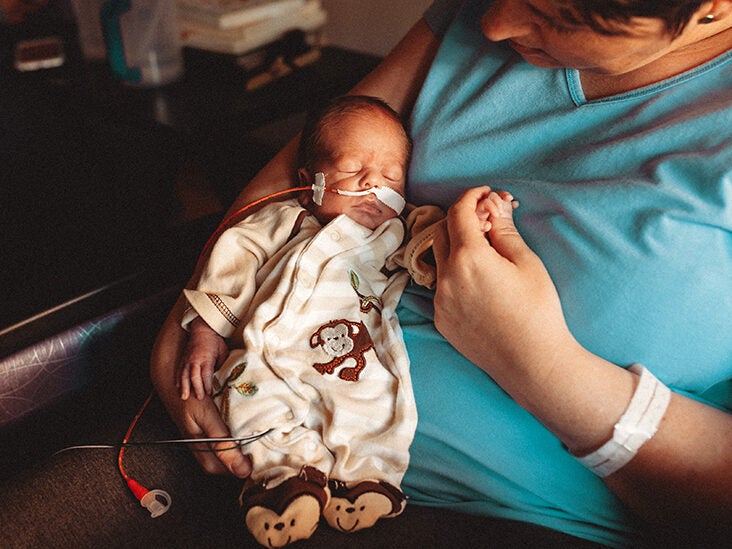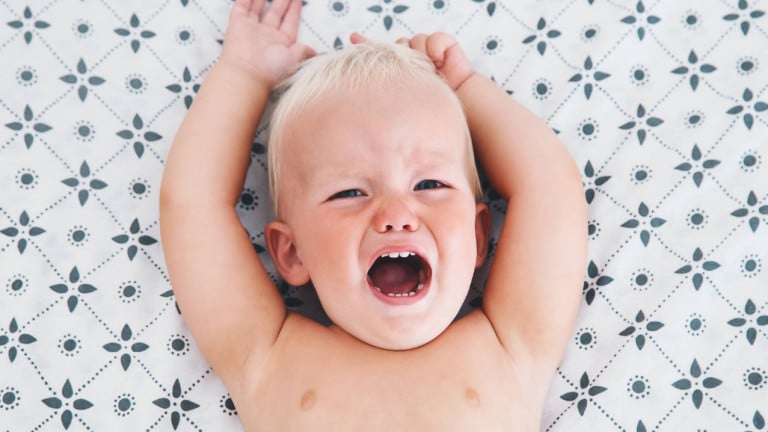The innocence of a baby’s laughter can quickly turn to tears when a little one takes a tumble. A tiny head bumping against a hard surface like a hardwood floor can be a terrifying experience for both the child and the parent. But take a deep breath, stay calm, and let’s get through this together. This article will equip you with the knowledge and reassurance needed to navigate this common parenting challenge.

Image: viewfloor.co
Every parent experiences moments of worry, and this is especially true when it comes to their child’s safety. Knowing what to do in the event of a head bump, and understanding the potential risks is key to feeling confident in your parenting role. We’ll explore the reasons why a baby might fall, the common signs to look for, and most importantly, the steps to take to minimize any potential risks.
Understanding What Happens When a Baby Hits Their Head
A baby’s head hitting the floor might be a moment of pure shock, but understanding the anatomy and development of a baby’s skull can help to ease any fears. A baby’s skull is, in fact, softer than a grown adult’s. This is due to the growth plates in their skull that are still forming. These growth plates act like shock absorbers, helping to protect the baby’s brain from excessive impact. However, this doesn’t mean that every head bump is harmless.
Types of Head Injuries: Understanding the Spectrum
There is a wide spectrum of potential head injuries, ranging from mild to severe. The most common type of head injury resulting from a fall is a concussion, which involves a temporary disturbance of brain function. Symptoms of a concussion can include:
- Dizziness
- Nausea
- Confusion
- Difficulty concentrating
- Crying more than usual
- Drowsiness
- Loss of consciousness (brief)
Assess the Situation: A Parent’s Guide
Following a head bump, it’s natural to feel overwhelmed. Take a deep breath and focus on observing your baby’s behavior. Here’s a simple checklist for evaluating the situation:
1. Assess the fall:
- How high did the baby fall from?
- What surface did they hit?
- Was the impact direct to the head or did they hit on another part of their body first?
- Was there any loss of consciousness?
- How does the baby seem after the fall?
2. Observe your baby:
- Crying: Is the crying inconsolable or does it subside?
- Head: Check for any visible bruising, swelling or cuts.
- Activity: Is the baby alert and able to interact with you?
- Eyes: Are their pupils dilated or uneven?
- Sleeping: Is the baby excessively drowsy or difficult to wake?

Image: reviewhomedecor.co
When to Seek Medical Attention
While most head bumps are minor, some situations require prompt medical attention. If you observe any of the following, contact your pediatrician or emergency services immediately:
- Loss of consciousness (even for a brief time): A loss of consciousness, even if brief, is never a normal reaction to a fall.
- Severe confusion, drowsiness, or lethargy: An unusual level of sleepiness or difficulty waking up can be serious.
- Pupil dilation or unevenness: Unequal pupil sizes can indicate a more serious injury.
- Vomiting or seizures: These are signs of a possible concussion or more serious head injury.
- Changes in behavior: Any significant change in your baby’s personality or behavior, such as irritability, agitation, or listlessness, needs immediate medical attention.
- Any concerning symptoms persist: If your baby seems unwell, even if the initial symptoms seem mild, it’s best to err on the side of caution and seek medical advice.
Emergency First Aid for a Head Bump
In the event of a head bump, it’s important to remain calm and take immediate action. Here’s a step-by-step guide:
- Check for bleeding: If your baby has a cut, gently apply pressure with a clean cloth to stop the bleeding.
- Assess for swelling: If there is swelling, apply a cold compress wrapped in a thin cloth to the affected area for 10-15 minutes at a time.
- Observe and soothe: Stay calm and comfort your baby. Observe their behavior for any changes in alertness, activity levels, or responsiveness.
- Consult your doctor: Remember, even if you think the fall was minor, it’s always best to consult your pediatrician for reassurance and guidance.
What To Expect at The Doctor’s Office
Many parents are unsure if they should take their baby to the doctor following a head bump. It’s important to remember that
your doctor is your most reliable resource in these situations. They will be able to perform a thorough examination, including checking for signs of concussion, such as:
- Loss of consciousness: How long was the child unconscious?
- Headache: Does the child complain of a headache, and if so, how severe is it?
- Dizziness: Does the child feel dizzy or lightheaded?
- Nausea: Is the child experiencing nausea or vomiting?
- Memory problems: Can the child remember what happened before or after the fall?
- Balance problems: Does the child have trouble walking or standing?
- Changes in vision: Are there any changes in vision, such as blurred vision, double vision, or sensitivity to light?
If the doctor suspects a concussion, they may recommend keeping a close watchful eye for symptoms over the next few days. Depending on the severity of the injury, they may also order additional tests, such as a CT scan or an MRI.
Tips to Prevent Head Injuries: A Safety Guide
Preventing head injuries is a top priority for parents. Here are some simple tips to create a safer environment for your baby:
- Babyproof your home: Make sure any sharp edges are covered, and any potential hazards, such as stairs, are secured.
- Use a safe and secure crib: Ensure that the crib meets safety standards and is free of loose parts.
- Never leave a baby unattended on a high surface: This includes changing tables, counters, beds, and sofas.
- Install safety gates at the top and bottom of stairs: Prevent a baby from falling down the stairs.
- Supervise your baby closely: Always keep a close eye on your baby, especially when they are learning to crawl, stand, and walk.
- Consider a helmet: While not a common practice, a helmet can be considered for high-risk activities, such as riding in a stroller on uneven terrain.
Trust Your Instincts: A Parent’s Intuition
As parents, we have an innate ability to understand our children. Trust your gut instincts. If something feels wrong, even if the symptoms are seemingly minor, seek medical advice from your doctor. The reassurance and expert opinion of a medical professional are invaluable.
Baby Hit Head On Hardwood Floor From Sitting Position
Final Thoughts: Learning and Growing
A baby hitting their head on a hardwood floor is a common occurrence, and it can be a scary moment for both parents and babies. However, in most cases, these incidents can be managed with a little TLC and a watchful eye. Learn the signs and symptoms of a concussion, remember when to seek medical attention, and most importantly, trust your instincts as a parent. The goal is not to live in fear but to be prepared. The more we know, the safer and more confident we feel in our role as parents. By taking these steps, we can ensure that we are doing everything we can to keep our little ones safe and healthy.






